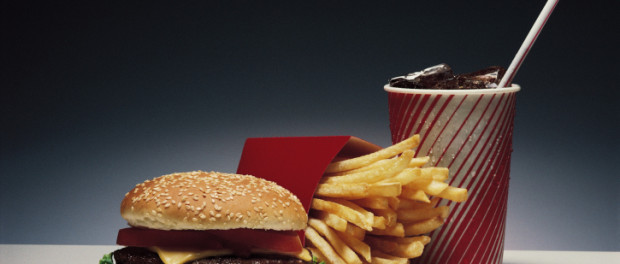Fast Facts about Fast Food
By Amy Campbell, MS, RD, CDE
Many fast food and chain restaurants across the nation display the calorie content of their menu items. But how many people actually read them? Unfortunately, a study by the National Center for Chronic Disease Prevention and Health Promotion found that only one out of every three customers looks at this information.
Nutrition information is important to know, because many Americans are eating out more than ever before. There are many studies that show a clear pattern in people who eat away from home three or more times each week: they tend to eat more sugar, unhealthy fats, and calories. An even longer list of studies shows that eating out often is linked to serious health problems, like diabetes, obesity, and heart disease.
The problem is that restaurants want you to like their food and to keep coming back. For this reason, they may use unhealthy cooking methods (like deep frying), unhealthy ingredients (like processed salt, sugar, and fat), or unhealthy portion sizes.
Be a calorie-conscious customer
According to a study published in the Journal of Public Health, the few customers who did read the calorie information let it influence what they ordered.
Some restaurants are required to post visible calorie information and offer written nutrition facts to those who ask for them. Now that restaurants must display calorie information, they may decide to serve healthier options. Until then, however, you can still benefit from simply taking a closer look at what you’re eating.
The only way to know if a menu item will fit into your healthy meal plan is to read the nutrition information. (And, if you don’t have one already, your healthcare provider can help you design a meal plan.) When you plan to eat out, make sure to choose a restaurant with enough healthy options. Remember that many fast food meals are high in carbohydrates, and can raise your blood glucose quickly.
No more mystery meals
If you do read the calorie information, make sure to use it. Eating healthy while eating out is not impossible. Planning ahead and examining the nutrition information is a great start. Aside from calorie information, consider some of the following suggestions:
- Avoid foods that are deep fried or breaded. Instead, try grilled, baked, or broiled vegetables and meats.
- Choose water, milk, or a sugar-free drink instead of soda or lemonade.
- Avoid large portions labeled with words like “double-sized,” “super-sized,” or ”jumbo.” Those words mean that the food has a lot of unhealthy fats and carbohydrates that can pack on the pounds and spike your blood glucose.
- Try to avoid high-fat, high-sugar, and high-calorie toppings like mayonnaise and ketchup. Flavor your foods with some pepper, vegetables like onions and garlic, or a small amount of mustard.
- Salads are a great way to pack more vegetables into your day. However, look out for high-fat or high-sugar dressings, and calorie-laden toppings like large amounts of cheese, candied nuts, or bacon.
You don’t have to stop eating out, but make it a goal to choose healthier options at restaurants. The calorie information posted on restaurant boards and menus is there to help you keep your health on track. Diabetes is a 24/7 condition. Taking care of your diabetes in someone else’s kitchen is just as important as in your own.













